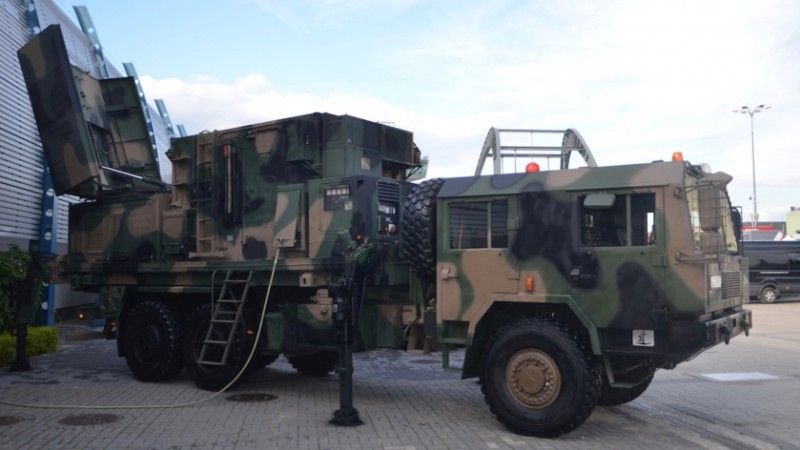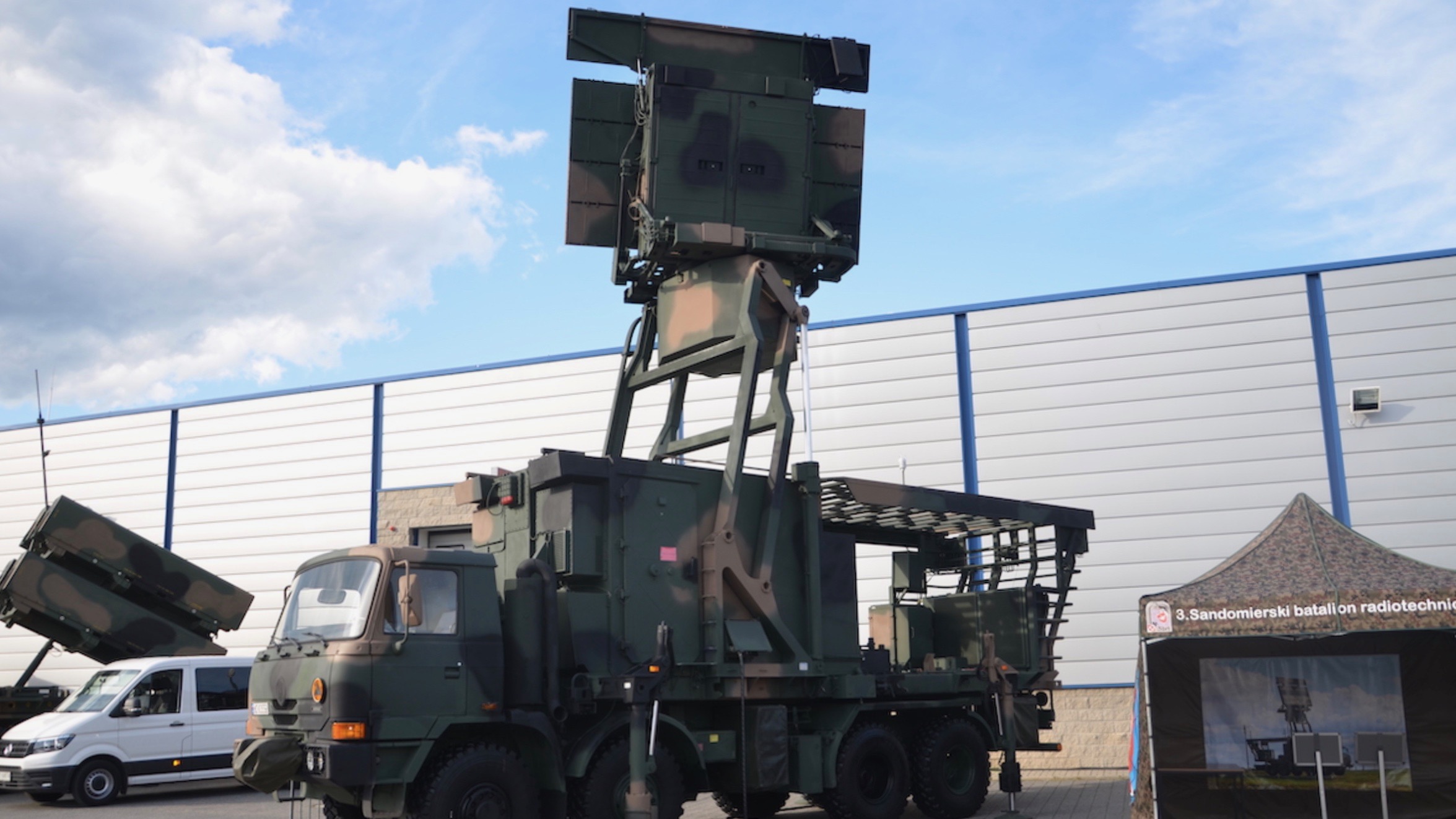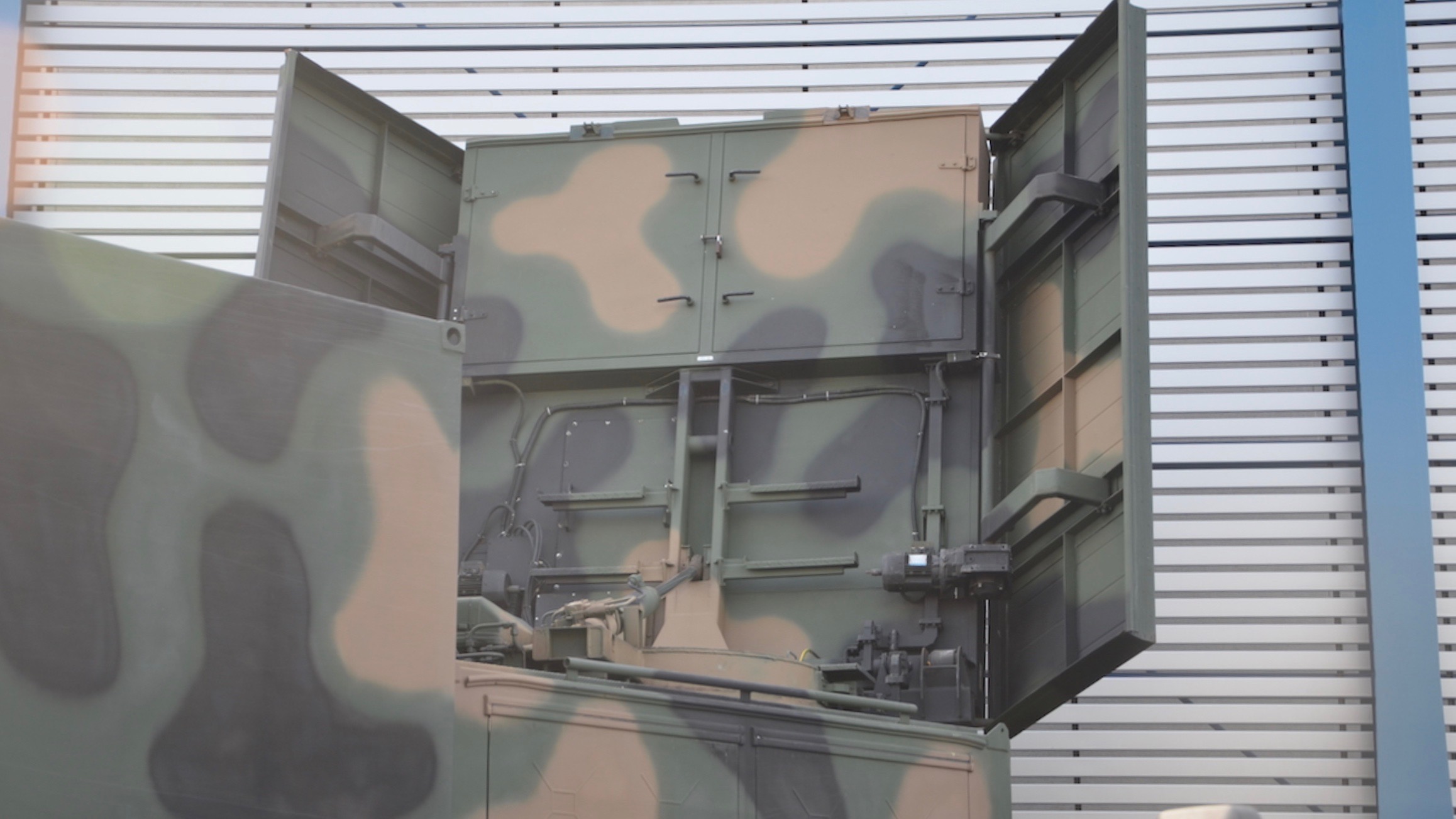Polish Radars Showcased at MSPO 2020

Radars manufactured by the Polish PIT-RADWAR company are presented within the outer exhibition area at the MSPO 2020 event, alongside other equipment operated by the Polish military. The exhibition features two Polish radars: “Liwiec” firefinder radar and TRS-15 “Odra” 3D radar with a long-range IFF interrogator.
The mobile TRS-15 radar has been designed, primarily, with the integrated air defence system in mind. The main task of this radar is to detect airborne threats and transmit data on those objects to the upper-tier C2 systems. The TRS-15 radar consists of two separate units (antenna and designation unit) transported on a truck with ISO 6 m attachments. Both units are powered from two generators of their own.
Thanks to its mobility (the radar can be deployed on-site by a three-man crew in less than 20 minutes), the TRS-15 could be employed to fill in the radar coverage gaps. Once the maritime channel functionality is added, the system could also be employed to detect naval vessels. This is why the radars in question (TRC-15 variant) have become a part of two Coastal Missile Squadrons belonging to the Polish Navy (that are a part of the so-called Naval Missile Unit).

The TRS-15 is a 3D radar - apart from the target azimuth and distance the sensor in question can also measure the target altitude. This is done with the use of a mono impulse method, with the use of an elevation fan beam and azimuth mechanical scan. The radar is tailored to work within an environment saturated by active and passive countermeasures. This property has been achieved thanks to an adaptive signal interference map, automatic interference monitoring, selection of frequency that has been least affected by the interference, and pseudo-random impulse repetition frequency change.
Apart from the data obtained from data processing systems of its own (position, speed, heading, and so on), the radar could also include data provided externally in the air picture, downloaded from the integrated long-range IFF interrogator. The IFF system was developed by PIT-RADWAR as well. It comes in the Mark XIIA variant (IDZ-50), which is capable of the Mode 5 operation. The radars in question are operated by two branches of the military: the Air Force (radar units) and the Navy (Naval Missile Unit)

Meanwhile, the RZRA “Liwiec” firefinder radar is a system operated by the Army - in a quantity of 10 examples. The system remains a part of the inventory of the artillery regiments and the Artillery and Armament Training Centre in Toruń. There, the system in question is used to identify the enemy artillery assets and to compute the firing solutions to direct their artillery assets. The radar has been developed by the Industrial Institute for Telecommunications [PIT] which is currently a part of the PIT-RADWAR S.A. company. Liwiec has been the first system of its kind in Poland.
At the design stage, other designs were used as a starting point - including the radar elements and signal processing algorithms derived from the “Brda” mobile 3D radar design. Thanks to the above it has been possible to design a radar that could detect the enemy artillery shelling and also detect the firing position thus providing relevant data for adjusting the firing solutions.
This significantly enhances the capabilities of the missile/rocket/artillery units, providing them with an entirely new set of options emerging as modern systems, such as “Krab”, “Rak”, “Langusta” are introduced. These properties made the “Liwiec” radar useful in combat setting in the Afghan deployment between 2010 and 2012. A single radar of the type was used to protect the Polish military compound in the Ghazni province, jointly with Dana-T howitzers and FlyEye UAVs. One of the LIWIEC systems was also utilized to secure the 2016 NATO summit in Warsaw and the World Youth Day organized in Cracow (do detect potential UAV threats).
Liwiec Artillery Reconnaissance (Firefinder) Radar System is being developed continuously. One of the primary changes is seen in the introduction of an AESA antenna array based on GaN semiconductor elements. Multi-channel signal analysis and processing and digital/software-defined transmitter-receiver technologies are also among the upgrades implemented. Thanks to the above, not only could the “Liwiec” system be used to support the artillery units, as it may also be employed to carry out reconnaissance and gather intelligence deep behind the enemy lines, acting as a typical multi-purpose battlefield reconnaissance sensor.
Currently “Liwiec” can also detect and track aircraft, helicopters, and UAVs, or it could be used as a weather radar. It can also track the land assets.
